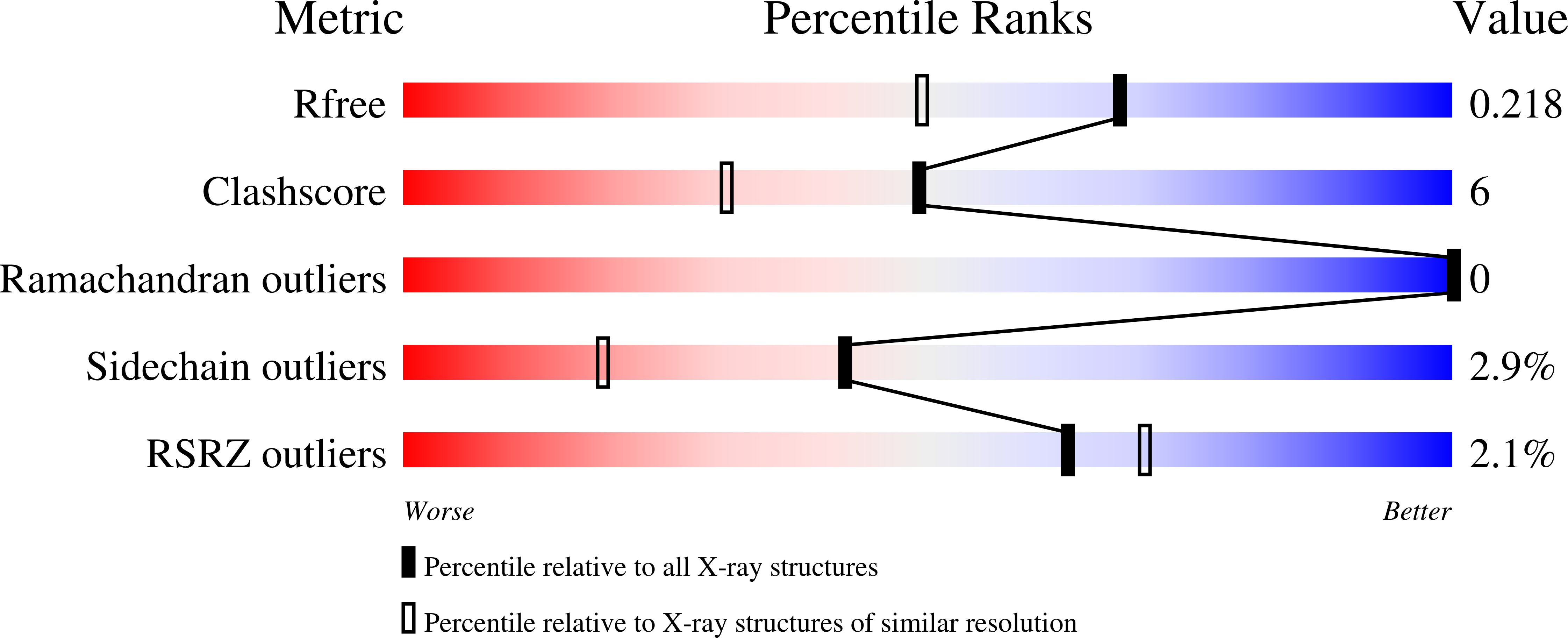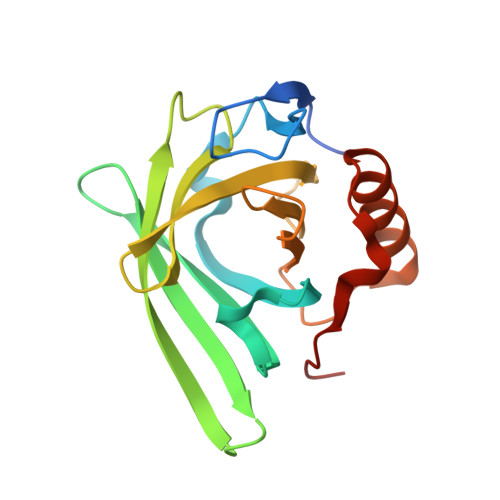The crystal structure of the Escherichia coli lipocalin Blc suggests a possible role in phospholipid binding
Campanacci, V., Nurizzo, D., Spinelli, S., Valencia, C., Tegoni, M., Cambillau, C.(2004) FEBS Lett 562: 183-188
- PubMed: 15044022
- DOI: https://doi.org/10.1016/S0014-5793(04)00199-1
- Primary Citation of Related Structures:
1QWD - PubMed Abstract:
Lipocalins form a large multifunctional family of small proteins (15-25 kDa) first discovered in eukaryotes. More recently, several types of bacterial lipocalins have been reported, among which Blc from Escherichia coli is an outer membrane lipoprotein. As part of our structural genomics effort on proteins from E. coli, we have expressed, crystallized and solved the structure of Blc at 1.8 A resolution using remote SAD with xenon. The structure of Blc, the first of a bacterial lipocalin, exhibits a classical fold formed by a beta-barrel and a alpha-helix similar to that of the moth bilin binding protein. Its empty and open cavity, however, is too narrow to accommodate bilin, while the alkyl chains of two fatty acids or of a phospholipid could be readily modeled inside the cavity. Blc was reported to be expressed under stress conditions such as starvation or high osmolarity, during which the cell envelope suffers and requires maintenance. These data, together with our structural interpretation, suggest a role for Blc in storage or transport of lipids necessary for membrane repair or maintenance.
Organizational Affiliation:
Architecture et Fonction des Macromol¨¦cules Biologiques, UMR 6098, CNRS and Universit¨¦s Aix-Marseille I and II, 31 chemin J. Aiguier, F-13402 Marseille Cedex 20, France.














